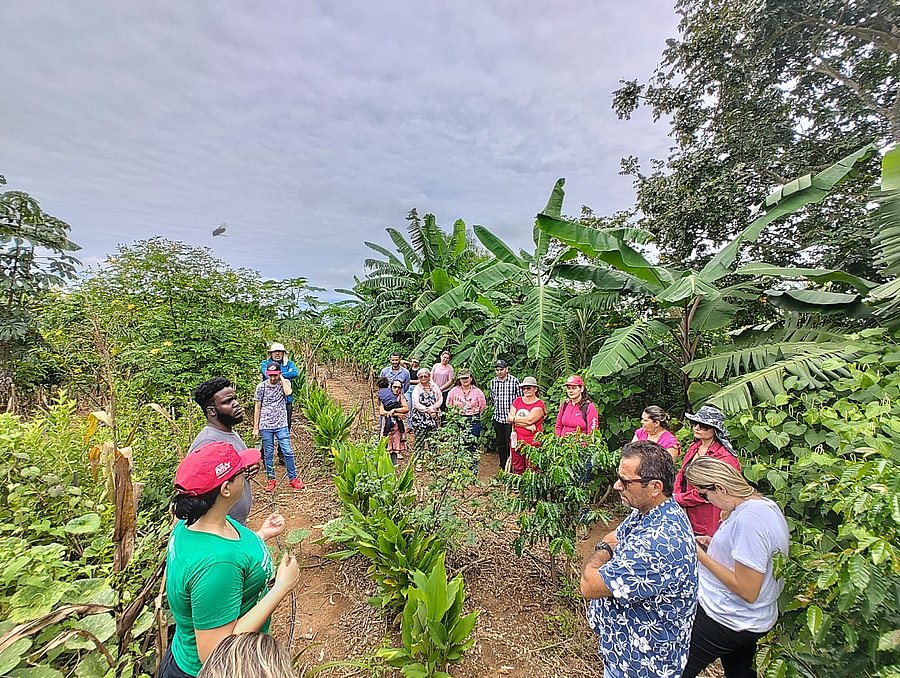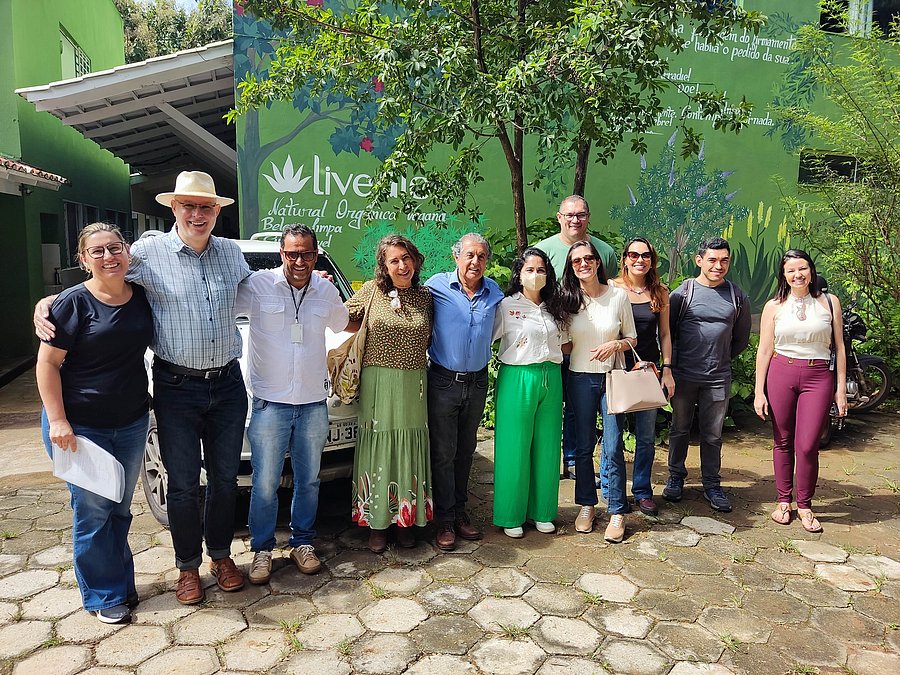Talking about research results
Natural active ingredients from Brazilian plants for the sustainable cosmetics of tomorrow: University invites you to an international workshop

Scientists from the "NativePlantInno" project on the test field in the Brazilian Cerrado // Photo Bergische Universität/Jörg Rinklebe
The workshop is part of the "NativePlantInno" project, which combines ecological research, social responsibility and economic innovation: A Brazilian-German consortium of experts from the Universidade Federal de Goiás (UFG), the Universidade Federal de São Paulo (UNIFESP), the University of Wuppertal and the Freie Universität Berlin is working together with the Brazilian cosmetics company Livealoe to develop new natural products.
The focus is on utilising the traditional plant knowledge of an indigenous women's community in the Brazilian Cerrado, whose living conditions are to be improved through the project partnership. "The aim is for the women to market the medicinal plants they grow, which will increase their income and opportunities," reports Jörg Rinklebe. The professor of soil and groundwater management at the University of Wuppertal is in charge of the project.
At a glance: Date and location
International workshop on the NativePlantInno project on Monday, 30 June 2025 at the Haspel campus of the University of Wuppertal, lecture hall HC.00.20, Pauluskirchstraße 7, 42285 Wuppertal. Start: 9.30 am.
Admission is free, registration is not required. The workshop will be held in hybrid form and in English.
Further information can be found on the Workshop website.

Partner for research into sustainable cosmetics is the company Livealoe // Photo Bergische Universität/Jörg Rinklebe
A special highlight: the workshop begins with a morning session explicitly aimed at users and the interested public, providing impressions from the Brazilian Cerrado. Presentations, including from representatives of the local women's community and the researchers involved, will explain how the knowledge about the effectiveness of traditional plants can be scientifically proven and how this can be used to create market-ready, low-allergen cosmetic products such as a healing ointment with sun protection. Visitors will also have the opportunity to visit a mobile laboratory with state-of-the-art analytical technology.
This opportunity is also available in the afternoon. The rest of the programme is then aimed at a specialist scientific audience. Numerous presentations - some on site, some virtually from Brazil - will shed light on topics such as trace elements in soils, bioactive plant substances and sustainable agroforestry systems. Further opportunities for cultivating Brazilian plants in German soils will also be discussed (see also the detailed information box on the research project) as well as the regulatory and economic framework conditions for a European market launch.
More background on the "NativePlantImmo" research project
In the "NativePlantImmo" project, the scientists analysed traditional wound and medicinal plants from Brazil in more detail. The fact that the plants are effective has so far been based on traditional knowledge, including that of the women's community involved, but they have not yet been scientifically analysed.
The project partners collected scientific evidence for the mechanisms of action of the medicinal plants by analysing, for example, the site requirements for their growth and the composition of the trace elements they contain. For example, they were able to quantify the existing concentrations of zinc and selenium. Zinc heals wounds, selenium strengthens the human immune system, but can also be toxic if the concentration is too high.
The scientists also took the first steps towards trialling the cultivation of Brazilian plants in Germany. To this end, the Department of Soil and Groundwater-Management, headed by Prof Dr Jörg Rinklebe, brought plant seeds from Brazil to the greenhouse at the University of Wuppertal and cultivated them in North Rhine-Westphalian soil - with success! The healing effect, caused among other things by the right composition of trace elements, could also be demonstrated to a similar extent in the plants growing here - even though German soils differ significantly from Brazilian soils in terms of their composition. "In Brazilian soils, for example, we find a lot of iron and aluminium, in German soils nitrogen, phosphorus and potassium," says Prof. Rinklebe. Some trace elements inhibit the effect of others, so knowing their composition in the plants is of great importance for the project.
This is a success because it could enable alternatives to existing wound healing products to be offered. In Europe, says Rinklebe, we would therefore gain a benefit from plants whose effect was not previously known or utilised, with the idea of creating equivalent or better wound healing products than before. "Even though there are already various products on the market, different forms of allergies and intolerances require a choice for affected people," explains the expert.
The "NativePlantInno" research project is funded by the Federal Ministry of Education and Research (BMBF) and the Federal Ministry of Food and Agriculture (BMEL) through the Agency for Renewable Resources (FNR). The total duration of the project is three years and three months, which will end at the end of 2025; the project team is currently applying for follow-up funding.
